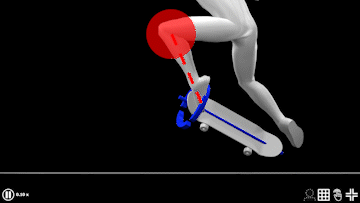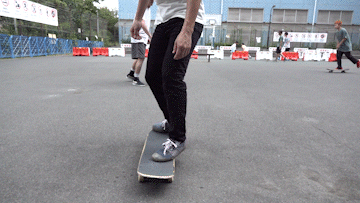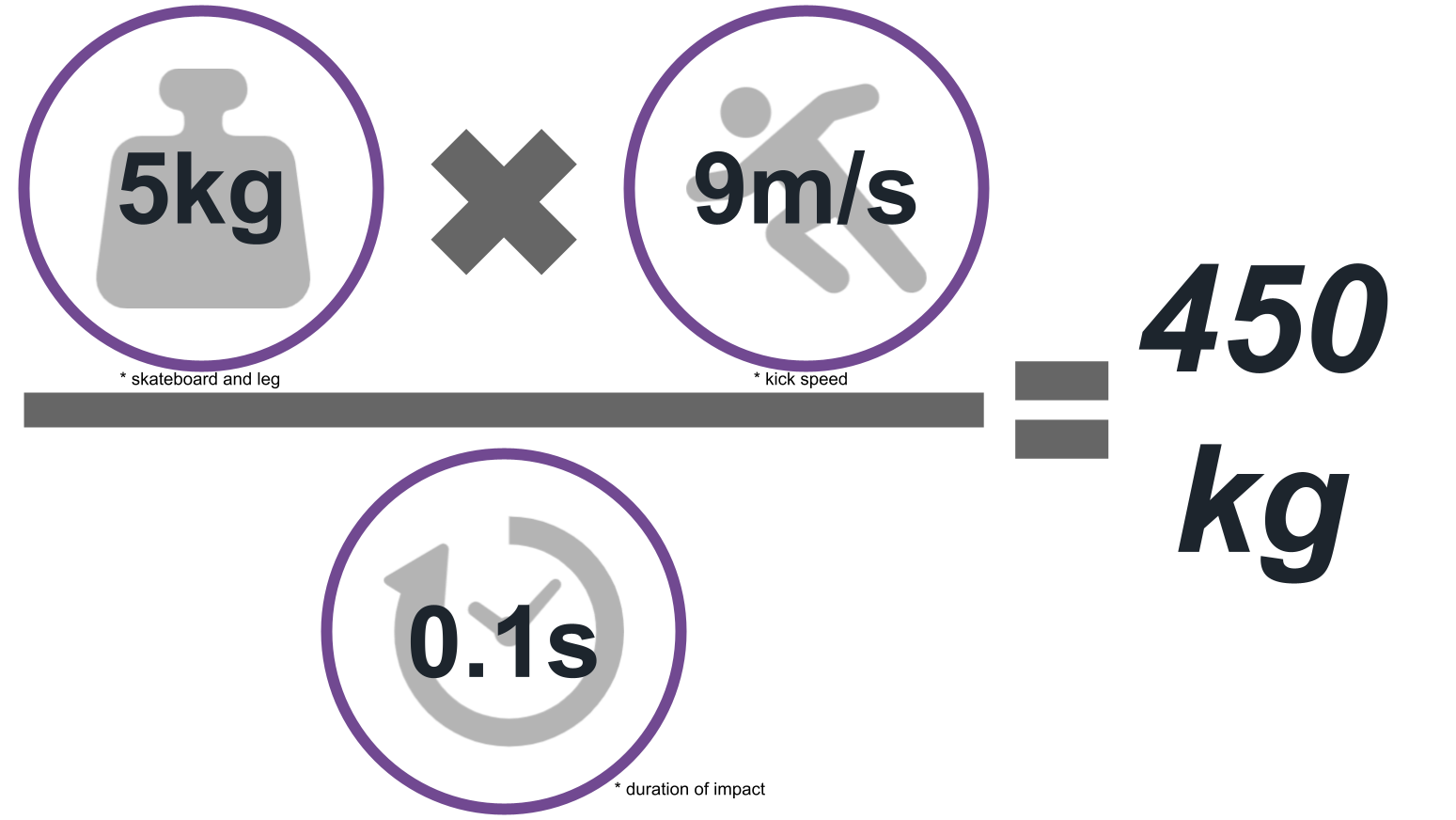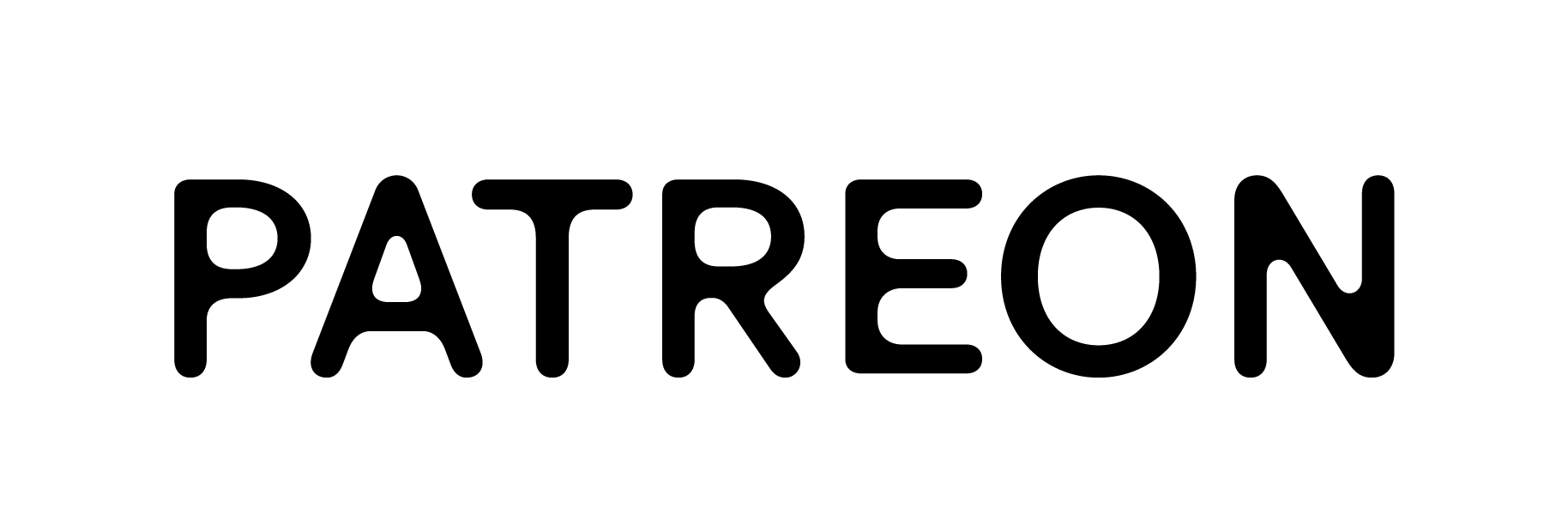Summary
Flick quickly, not forcefully.
Flicking a skateboard requires only 3kg of energy(reference). You know you can flip your board easily with your fingers, so your legs that can generate eight times more energy than your arms should be able to flip your board easily, too. This means if your board is flipping slowly, it's NOT simply because your flick's too weak. Instead, you could be flicking too hard and pushing your board forward.
Avoid overflicking.
Overflicking is the worst enemy of a Kickflip. You may unintentionally do it when you are afraid of landing back on your board, hoping to complete a flip as fast as possible. Flicking too hard may cause too much friction between your front foot and your board or may direct your flick parallel to your board. When there's too much friction, your board stick to your front foot, and when your flick directs parallel to your board, you'll wind up pushing your board instead of flipping it. Please click here for more).
Simulation
Analysis
The most efficient way of flipping an object
When you try to flip an object in a most energy-efficient way, you should apply a force at the right angle on the object's axis. The same concept applies to a Kickflip, too.
If you think your board is not flipping fast enough, try to apply the force in the right direction(which I will explain below).
Plus, you need only a little energy to complete a flip. As evidence, you can spin your board with your fingers. So if your board is not flipping fast enough, in most cases, it's not because you are not flicking enough but because the direction of a flick is not right.

Execution
Your flick should direct at the right angle on the axis of your board.
In the previous content, we learned how overpopping makes a kickflip harder. It is also essential to avoid "Overflicking," where you exert too much force on your flicking foot. You don't need much energy as long as your flick goes at the right angle on the axis of your board (described in BLUE in the image).

Don't interfere with the axis.
If the direction of your flick gets closer to parallel to the blue axis, your board will start spinning around another axis (Dolphin flip axis). It makes it harder to flip your board, making it feel heavier.
Try to flick without interfering with the axis by trying to flick the side of the nose.

Know where to stop flicking.
Again, flicking does not need so much energy. Try to envision where you stop your front foot before popping the tail. Stop it right behind your board's nose and avoid extending your front leg too far; otherwise, you will lose control.
Imagine your front knee as a pivot point, and flick your front foot in an arc around it. Keep your flick compact and quick - no need to force your board to flick.

Practice
Try flicking while getting off your board.
Pop the tail and get off your board on your heel side. Start sliding up your front foot. Flick gently. Make sure to keep in mind where you should stop flicking.

Appendix: Estimate
How much energy does a human leg generate when kicking a soccer ball?
The amount of impact can be calculated as follows:
- Weight of legs (account for 8~10% of human bodies): 5kg
- Speed of kick: 9m/s
- Duration of impact: 0.1s
- 450kg

How much energy does it require to flick a board with a hand?
The amount of impact can be calculated as follows:
- Weight of a hand plus a board: 3kg
- Speed of flick: 0.1m/s
- Duration of impact: 0.1s
- 3kg



 Convert your video into 3D
Convert your video into 3D Facebook
Facebook Twitter
Twitter



